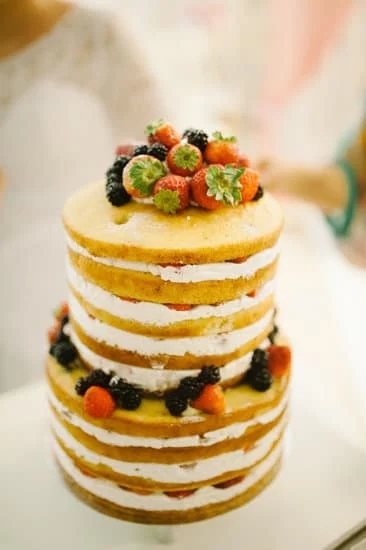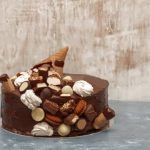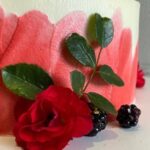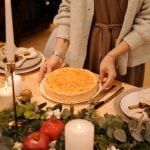What are the different cake decorating techniques that can transform a simple cake into a stunning masterpiece? Cake decorating plays a crucial role in not only enhancing the visual appeal of a cake but also adding to its overall taste and texture. From intricate designs to delicate patterns, the art of cake decorating opens up a world of possibilities for bakers and enthusiasts alike.
One popular technique in cake decorating is buttercream decoration, which allows for endless possibilities in creating various designs, shapes, and textures on cakes. The versatility of buttercream frosting makes it a favorite choice for both beginners and experienced decorators looking to add a personal touch to their creations. Another widely used method is fondant artistry, where artists work with fondant to sculpt intricate decorations, figures, and patterns on cakes that elevate them to works of art.
Piping techniques are essential skills that every cake decorator should master, as they offer the ability to create borders, flowers, and other decorative elements with precision. Additionally, royal icing mastery provides decorators with the tools to craft detailed and delicate decorations that add elegance to any cake design.
The use of airbrushing tools and stenciling designs further enhances the range of options available for creating visually striking cakes. With these techniques at their disposal, decorators can take their creations to new heights and leave a lasting impression on anyone who enjoys their delicious delights.
Buttercream Decorating
To start with buttercream decorating, it’s essential to have the right tools on hand. Piping bags, piping tips in different shapes and sizes, offset spatulas, and bench scrapers are some of the basic tools that you’ll need.
Once you have your tools ready, you can experiment with various techniques such as rosettes, ruffles, swirls, dots, and even intricate lace designs. The key is to practice consistency in pressure while piping and smooth out any imperfections with a gentle hand.
When it comes to creating designs with buttercream frosting, the possibilities are endless. From simple polka dots and stripes to elaborate floral arrangements and intricate lace patterns, your imagination is the limit. Buttercream flowers are particularly popular for cake decoration, with roses, peonies, and sunflowers being some of the most requested designs.
The key is to layer different colors of buttercream using piping tips to create dimension and depth in your floral designs. With patience and practice, you can master the art of buttercream decorating and create show-stopping cakes for any occasion.
Fondant Artistry
Working With Fondant
When working with fondant, it is important to knead it well so that it becomes pliable and easy to roll out. Roll out the fondant using a rolling pin on a smooth surface dusted with powdered sugar to prevent sticking. Once rolled out, carefully lift the fondant and place it over the cake to cover it completely. Smooth out any wrinkles or air bubbles by gently pressing on the fondant with your hands.
Creating Intricate Designs
Fondant allows for intricate designs such as delicate flowers, detailed lace patterns, and lifelike figures. To create these designs, use fondant tools such as cutters, molds, and shaping tools to sculpt the fondant into desired shapes. You can also use food coloring to tint the fondant in different shades and add edible luster dust for a shimmering effect.
Embracing Creativity
Fondant artistry is all about letting your creativity shine through in your cake decorations. Experiment with different textures, techniques, and designs to create unique and visually appealing cakes. Whether you are a beginner or an experienced cake decorator, fondant artistry offers endless possibilities for creating show-stopping cakes that will impress any audience.
Piping Techniques
Piping is a fundamental cake decorating technique that allows for the creation of intricate designs, borders, flowers, and more on cakes. By using different piping tips and techniques, bakers can customize their creations and add unique elements to their baked goods. One of the most commonly used tools in cake decoration, piping bags filled with buttercream or royal icing can turn a simple cake into a masterpiece.
Types of Piping Tips
There are various types of piping tips available in the market, each serving a different purpose in cake decorating. Some popular choices include round tips for writing and outlining, star tips for creating rosettes and borders, petal tips for making flowers, leaf tips for adding foliage, and specialty tips for specific designs like basketweave or ruffles. Experimenting with different piping tips can help bakers discover new ways to elevate their cake designs.
Piping Techniques
The way the piping bag is held and squeezed can significantly impact the outcome of the design. From creating smooth borders to intricate floral arrangements, mastering different piping techniques is essential for any aspiring baker. Techniques like pressure control, angle of piping, and consistency of icing play a crucial role in achieving clean lines and beautiful decorations on cakes. With practice and patience, bakers can enhance their piping skills and create stunning edible works of art.
Royal Icing Mastery
Royal icing is a versatile and classic cake decorating technique that can elevate the look of any baked treat. It is made from confectioners’ sugar, egg whites, and flavoring, creating a smooth and hard finish once dried. Royal icing is beloved for its ability to create intricate designs, delicate details, and elegant decorations on cakes. Whether you’re looking to pipe lace patterns, intricate borders, or finely detailed flowers, royal icing can help you achieve a polished and professional look.
One of the key benefits of royal icing is its ability to dry hard, making it ideal for intricate decorations that need to hold their shape. To master royal icing techniques, it’s essential to have the right consistency when piping.
The consistency of royal icing can be adjusted by adding more powdered sugar to stiffen it up for piping outlines or adding small amounts of water to thin it out for flooding areas with color. Additionally, using different piping tips can help create various textures and designs with royal icing on cakes.
Royal icing can also be used to create 3D decorations on cakes such as flowers, leaves, and intricate lace patterns. By mastering the art of pressure control while piping with royal icing, decorators can achieve different levels of dimension and intricacy in their designs.
Another tip for working with royal icing is to ensure that your cake is completely cooled before applying the decoration to prevent any melting or smudging. With patience and practice, anyone can master the art of using royal icing to create stunning and detailed decorations on cakes.
| Royal Icing Tips | Details |
|---|---|
| Consistency Control | Adjust consistency by adding powdered sugar or water for desired effects |
| 3D Decorations | Create flowers, leaves, and lace patterns for added dimension |
| Cooling Cake | Ensure cake is completely cooled before decorating to avoid smudging |
Airbrushing Skills
Airbrushing is a versatile cake decorating technique that allows for the application of color, shading, and effects with precision and control. This method involves using an airbrush gun to spray edible food coloring onto cakes, creating a smooth and seamless finish.
One of the benefits of airbrushing is the ability to achieve gradient colors, intricate designs, and artistic effects that may be challenging to replicate with traditional frosting techniques. By mastering airbrushing skills, cake decorators can take their creations to the next level and add a professional touch to their designs.
One of the key elements of airbrushing is understanding how to control the flow of color and adjust the pressure of the airbrush gun to achieve different effects. It’s essential to practice on a test surface before applying color directly onto a cake to ensure the desired consistency and coverage.
Additionally, experimenting with various types of stencils, masks, or freehand techniques can help decorators create unique patterns and textures using the airbrush tool. Whether it’s adding dimension to fondant decorations or creating a watercolor effect on buttercream frosting, mastering airbrushing skills opens up endless creative possibilities for cake decorators.
For those new to airbrushing, investing in quality equipment such as an air compressor and adjustable airbrush gun is crucial for achieving professional-looking results. Understanding color theory and how different shades blend together is also important when using an airbrush tool on cakes.
With practice and experimentation, decorators can develop their own signature style using airbrushing techniques to enhance their cake decorating projects. Overall, mastering this skill adds another dimension of creativity and innovation to the art of cake decorating.
| Skills | Benefits |
|---|---|
| Precision control | Create gradient colors |
| Ability for intricate designs | Add dimension to decorations |
Stenciling Designs
One of the key benefits of using stencils for cake decorating is the ability to achieve professional-looking designs with minimal effort. Whether you are a beginner baker or an experienced pastry chef, stenciling designs can help elevate the visual appeal of your cakes without requiring advanced skills or techniques. Additionally, stencils come in a wide variety of patterns and themes, allowing for endless creativity and customization when it comes to decorating cakes for different occasions and celebrations.
To get started with stenciling designs on your cakes, all you need are some basic tools including stencils in your desired patterns, edible decorations such as powdered colors or sprinkles, and a stable surface to work on. Simply place the stencil over the cake where you want the design to appear and gently apply your chosen decoration over it using a suitable tool.
Once you lift off the stencil carefully, you will reveal a beautifully crafted pattern on your cake. With practice and experimentation, you can master the art of stenciling designs and impress your friends and family with stunning creations for any event or celebration.
Edible Image Printing
Here are some key steps involved in the process of printing edible images on cakes:
- Choose an image: Select a high-resolution image or design that you want to print on your cake. It could be a photo, logo, or any other graphic that you want to feature.
- Print the image: Use an edible ink printer to print the chosen image onto edible icing sheets. Make sure to adjust the size and scale of the image according to the size of your cake.
- Apply the image: Carefully peel off the printed icing sheet and gently place it onto the frosted surface of your cake. Smooth out any air bubbles or wrinkles to ensure a clean finish.
One of the main advantages of edible image printing is its ability to create detailed and intricate designs with precision and accuracy. Whether you want to showcase a favorite character, replicate a company logo, or display a cherished photo, this technique offers endless opportunities for creativity in cake decorating. Additionally, edible images are a great way to add a personal touch to your baked creations and impress your guests with customized treats that look almost too good to eat.
Conclusion
In conclusion, mastering different cake decorating techniques is not only essential for creating visually appealing cakes but also for enhancing the overall taste and experience of your baked goods. From buttercream decorating to fondant artistry, piping techniques to royal icing mastery, and even airbrushing skills and stenciling designs, each method offers a unique way to elevate your creations.
By understanding and practicing these various techniques, you can unleash your creativity and transform simple cakes into stunning works of art that are sure to impress.
Experimenting with different cake decorating techniques not only allows you to explore your artistic side but also helps you discover new methods and styles that suit your preferences. Whether you prefer intricate fondant decorations or delicate royal icing details, there is a technique out there that will resonate with your personal style and preferences. The key is to practice regularly, be patient with yourself as you learn, and most importantly, have fun in the process.
As you continue on your cake decorating journey, remember that the possibilities are endless when it comes to experimenting with different techniques. Don’t be afraid to step out of your comfort zone, try new tools and methods, and push the boundaries of what you think is possible.
With dedication, practice, and a willingness to learn, you can take your cake decorating skills to new heights and create masterpieces that not only look beautiful but taste delicious too. So go ahead, unleash your creativity, explore the world of cake decorating techniques, and let your imagination run wild.
Frequently Asked Questions
What Are the 7 Different Cake Decorating Techniques?
Cake decorating techniques range from simple to intricate, including basics like frosting a smooth cake, piping decorations with buttercream or royal icing, using fondant for more elaborate designs, creating edible flowers with gum paste, adding texture with stenciling or embossing, and painting on cakes using food coloring.
What Are the 5 Kinds of Cake Decorating?
The five main kinds of cake decorating include buttercream decorating, fondant decorating, royal icing techniques, gum paste decorations, and marzipan designs. Each method offers different textures and finishes that cater to various styles and preferences in cake decoration.
What Are the Current Trends in Cake Decorating?
Current trends in cake decorating include mirror glaze cakes that feature a shiny, reflective finish, drip cakes with colorful drips running down the sides, fault line cakes that have a visible recessed line around the middle filled with decorations, geode cakes mimicking the beauty of natural crystals using sugar art techniques, and watercolor cakes blending soft pastel hues for an artistic touch.
These trends showcase the ever-evolving creativity and innovation within the world of cake decoration.

Welcome to our cake decorating blog! My name is Destiny Flores, and I am the proud owner of a cake decorating business named Cake Karma. Our mission is to provide delicious, beautiful cakes for all occasions. We specialize in creating custom cakes that are tailored specifically to each customer’s individual needs and tastes.





